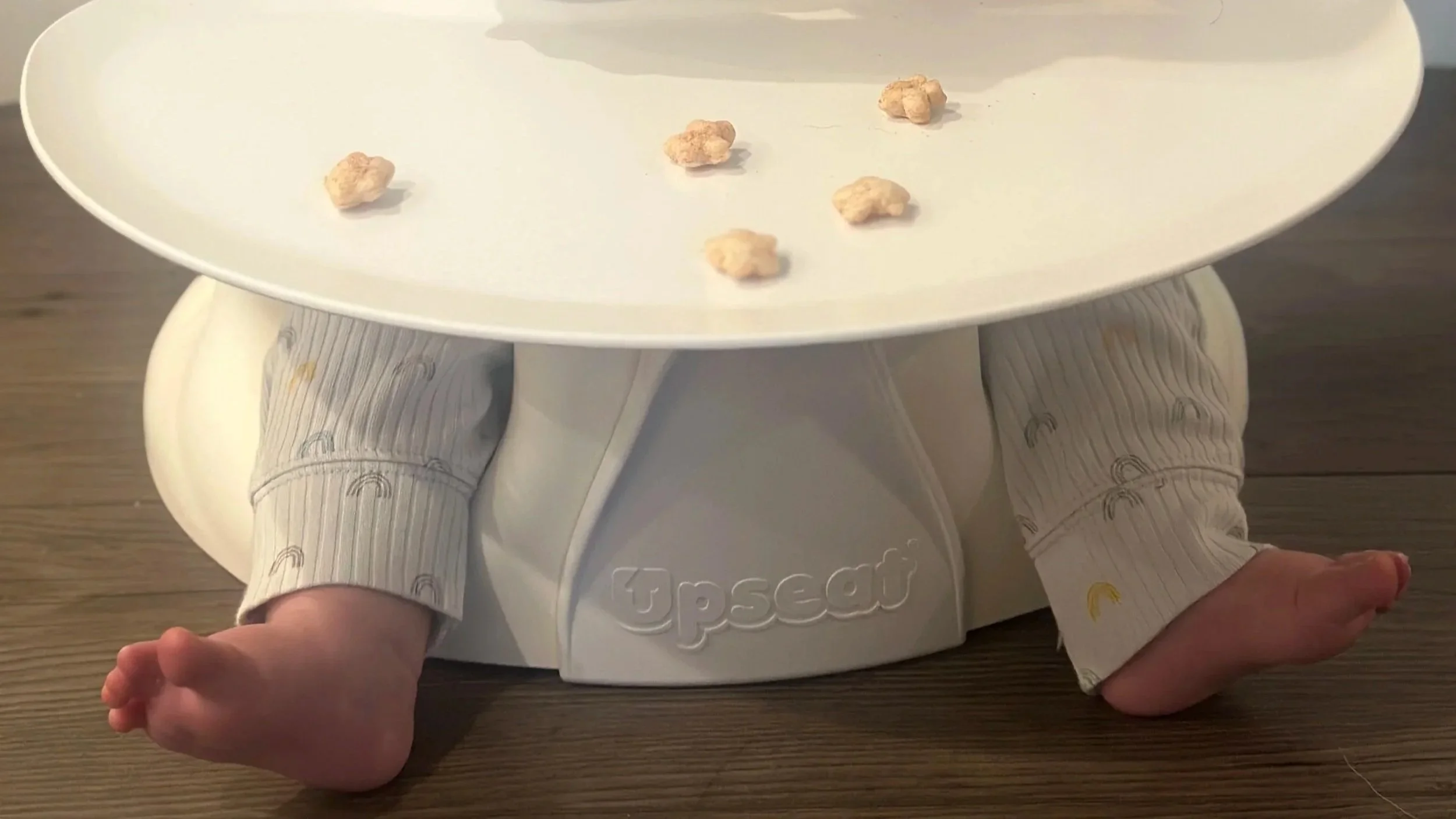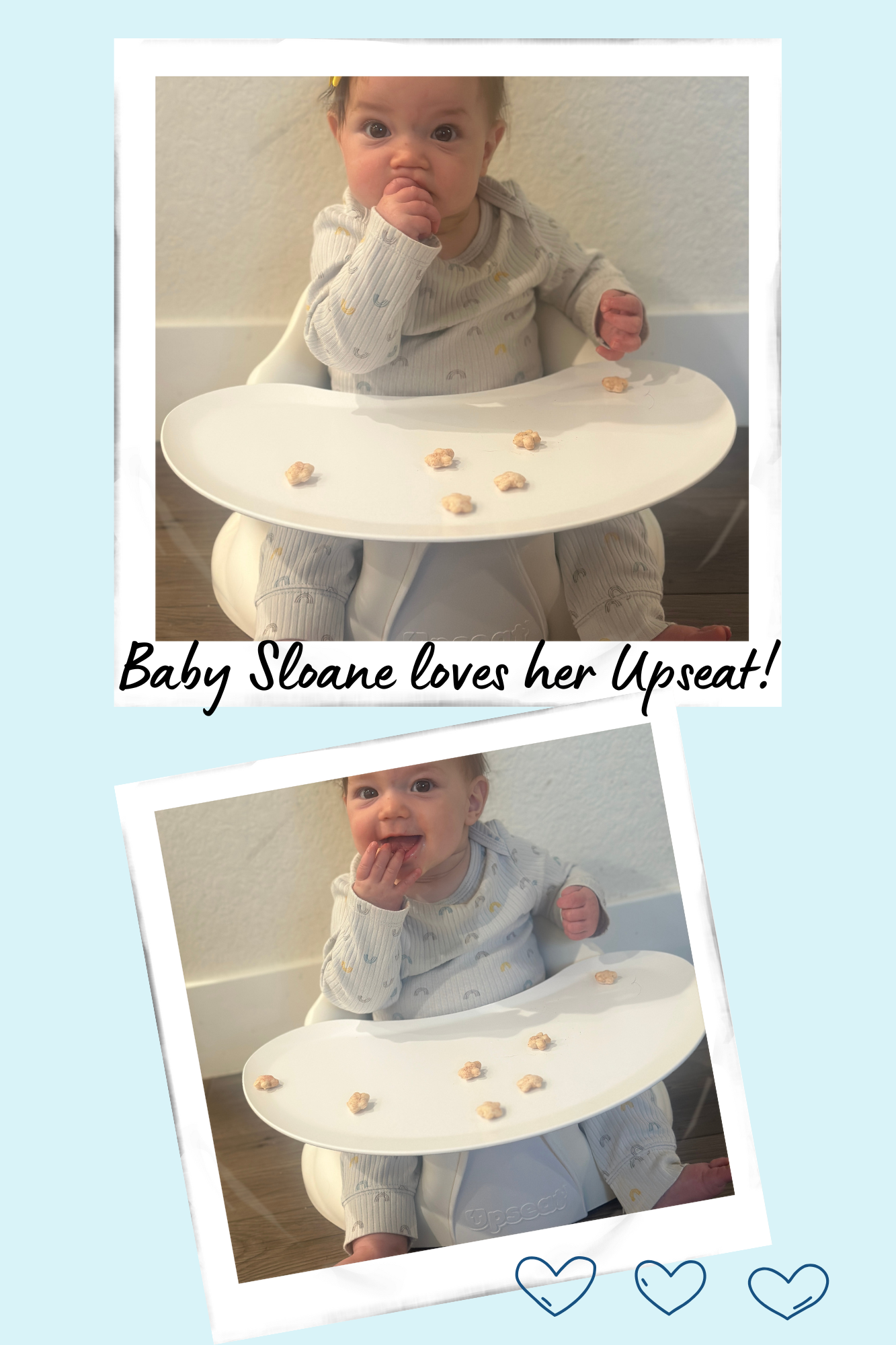Why We Love The Upseat: A Pediatric Physical Therapist's Perspective
The Upseat Review: A Pediatric Physical Therapist’s Take on Baby Posture and Development
Hi! I’m Dr. Nicole, a pediatric physical therapist, craniosacral fascial therapist, and mom of three in Denver. I’m also the owner and founder of Movevery, a pediatric physical therapy company dedicated to helping every little body thrive. We specialize in treating children 0–3 years old for a range of conditions including torticollis, head shape concerns, tummy time discomfort, body tension or low tone, and delayed milestones.
Over the years, I’ve worked across many pediatric settings—from early intervention to outpatient clinics and schools—but my passion grew even deeper when my own son faced challenges with tension, torticollis, head shape, feeding, and a rare condition called Sprengel’s Deformity. Even with my background, I felt the same overwhelm many parents feel when their baby needs extra support.
What made all the difference was having the right tools, guidance, and community around us. This is where Movevery came to be—I wanted to reimagine how pediatric therapy can support families through a whole-body approach that builds strong foundations for movement while easing the stress that often comes with early parenting.
That’s why when I recommend baby products, I’m very selective. I live by the “less is more” motto. We don’t need every gadget on the market—but the few things we choose can truly shape how our children move, grow, and explore their world. One of my favorite supportive tools is The Upseat.
Hip Development in Newborns: Safe Postures & Everyday Gear Tips
Parents often ask me how everyday things—like baby wearing or play gear—affect their baby’s hips. The truth is, hips are still forming at birth, and the little choices you make each day can help them grow strong for crawling, walking, and beyond.
At birth, the hip socket is shallow, and the ball of the hip isn’t fully nestled in place. The joint is flexible, and if a baby’s legs are forced straight too early, it can increase the risk for hip dysplasia or dislocation. These conditions may go unnoticed in infancy but can cause complications later in life.
By about six months, the hip joint is more stable and developed, but those first months are a window of opportunity to set hips up for success. That’s why I always look for gear that supports natural hip positioning—knees bent, legs apart, hips rotated outward—similar to how a baby rests on a parent’s hip.
Choosing Baby Gear That Supports Growth: Questions to Guide You.
Many parents I meet are surprised by how much baby gear can affect movement and development. If you’re shopping or setting up your space, here are a few questions to keep in mind:
Parent Question: Does this position my baby in a way that supports healthy hip and spine alignment?
Look for products that allow hips to open naturally and encourage upright posture rather than slumping.
Parent Question: Can my baby move freely, or is this gear restricting motion?
Movement is how babies build strength and coordination—too much containment can slow that process.
Parent Question: Is my baby comfortable and happy in this position?
The experts we collaborate with recommend starting with short periods in the Upseat and gradually increasing the time as your baby grows more comfortable and strong. Fussiness or stiffness can be a sign that their body isn’t supported properly.
Parent Question: How much time will my baby spend here?
Seats and containers can be helpful for a few minutes to cook a meal, throw in a load of laundry, but floor play and tummy time are essential for well-rounded development.
Why The Upseat Stands Out: A Physical Therapist’s Favorite Baby Seat for Healthy Development
The Upseat checks so many boxes when it comes to supporting development while also being practical for everyday family life. Here’s why it stands out for me:
Design, design, design: Created by physical therapists with babies in mind. It’s sleek, easy to use, and getting in and out is a breeze. We especially love the coconut color!
Healthy pelvic alignment: Instead of locking a baby into poor positioning, The Upseat allows the hips to spread to the side and rotate outward, while keeping the trunk upright. This supports hip development and gives the pelvis a strong foundation for movement.
Trunk and posture support: Stability in the lower body sets the stage for improved posture, reaching, and exploration. Babies need this foundation before they can start exploring with confidence—each new reach, grasp, and visual scan of their environment strengthens their muscles, supports eye–hand coordination, and helps build vital neuronal connections in the brain.
Versatile play station: Pop a spinner on the tray, add toys, or even try textures like shaving cream for sensory play. It becomes a safe and fun “DJ stand” for little explorers.
Starting solids: The ergonomic design positions the spine for optimal swallowing and digestion. And parents will appreciate how easy the tray is to clean—just snap it off and wipe it down.
Practical for families: Lightweight, easy to move around, and grows with your baby—The Upseat fits right into the flow of daily life.
Dr. Nicole’s Pro Tip: “Don’t forget to balance seat time with plenty of floor play for the best all-around development.”



